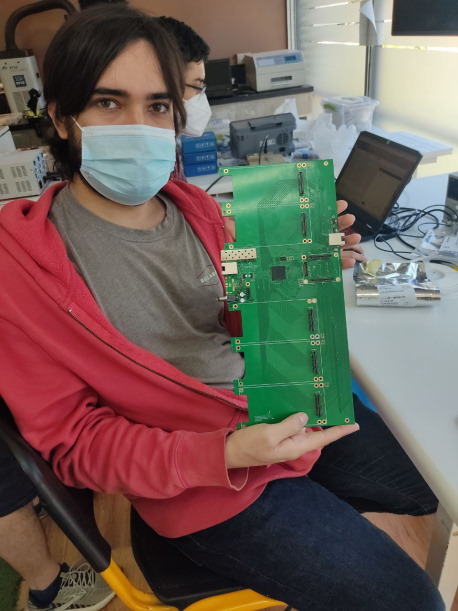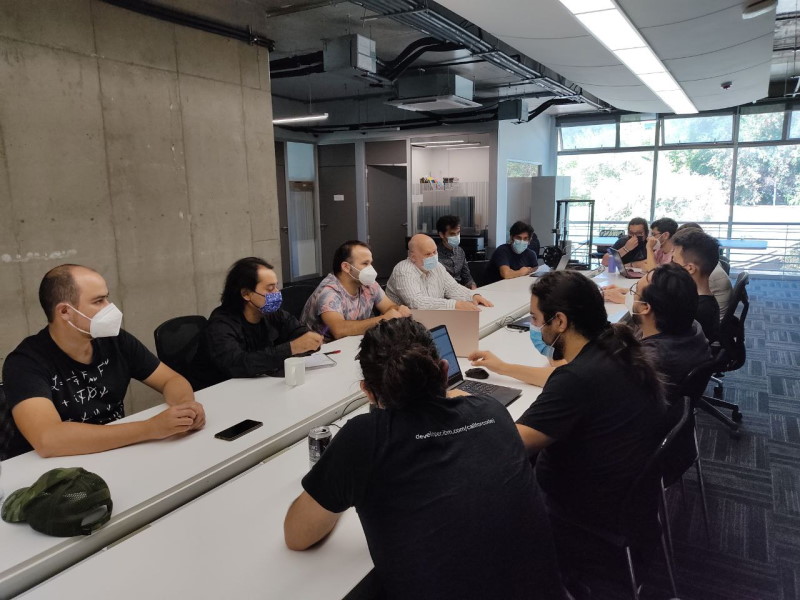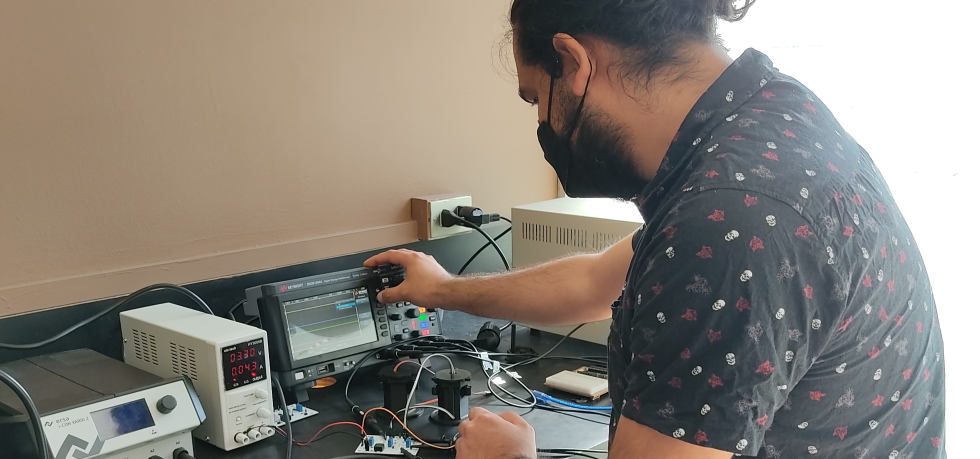At the Saphir Millennium Institute laboratory, located on the Casona de Las Condes campus of the Universidad Andrés Bello, a team of technicians and engineers work to develop cutting-edge technology for various experiments at the Large Hadron Collider at CERN, among other research projects worldwide. This is particle physics technology that could have revolutionary applications, such as medical imaging.
By Jorge Román
There is an deceptive question that particle physics researchers are constantly asked: What is particle physics for?
The question is tricky because the simplest answer could be that it is useful for understanding the mechanisms of matter at the subatomic level and beyond matter. For many people, this can be understood as "it is for no use at all". But we could say the same about music, literature or astronomy, and yet there are music and literature industries that generate large revenues and employ many people (record producers, publishers, printers...) and that astronomy has turned Chile into a leading country in foreign investment in astronomical observatories.-which is possible thanks to the clear skies of the Atacama Desert.
So what developments stem from particle physics research? There`s plenty. Essential medical applications,the birth of the World Wide Web, touchscreens and trackballs, and many innovations in data processing, engineering and electronics are directly linked to research in particle physics. So much so that the SAPHIR Millennium Institute collaborates on technological developments with its host universities. In addition, SAPHIR has a team of technicians and engineers working on the development of fundamental technology for research in particle physics.

Engineers and technicians at the Saphir Millennium Institute develop electronic systems that are not available anywhere else. These components are then used in particle physics research and must be integrated into experiments located in various laboratories around the world. The most important of these is the Large Hadron Collider (with its respective detectors).

Engineers and technicians at the Saphir Millennium Institute develop electronic systems that are not available anywhere else. These components are then used in particle physics research and must be integrated into experiments located in various laboratories around the world. The most important of these is the Large Hadron Collider (with its respective detectors).
The projects in which this team is involved are varied: neutron shields for particle detection experiments, development of high-speed signal acquisition systems for the Atlas experiment, radiation testing (to determine how electronic boards would perform under the radiation they would receive at the Large Hadron Collider), electronic circuits for particle detectors and component fault detection, among many others.
Matías Henríquez, one of the engineers working on projects at the Saphir Millennium Institute, says he is amazed by what electronics can do: "Something so small, so compressed, can do many things and, at the same time, help us in our lives [...]. Within the area of particle physics that we develop, the same principles of electronics are applied to medical applications, in spectrometry, detection, counting photons... So, the field and the applications that can be made with electronics is super vast.

In March, a meeting was held with the team of technicians and engineers who collaborate with the Saphir Millennium Institute: this team works not only in Chile, but also at CERN in Geneva.

In March, a meeting was held with the team of technicians and engineers who collaborate with the Saphir Millennium Institute: this team works not only in Chile, but also at CERN in Geneva.
Developing electronic systems for particle physics experiments involves a number of challenges. It is not only because most of the time the team must design and create circuits, shields and detectors that do not yet exist (i.e. they work at the cutting edge of technological innovation): it is also because these components must be compatible with technology that is already in operation, both at the Large Hadron Collider and at other experiments around the world. And the technology with which they must be compatible may be very fragile or several decades old.
Matias Liz is a mechanical engineer and works as a designer for the Saphir Millennium Institute's projects. Liz has to assess what a researcher needs, determine how it can be done, what components would be needed and how the project can be implemented: it is a job that can take many months, precisely because he has to create very specialised components that no one has invented yet. But this, rather than being a problem, is for him something challenging and positive: "I specialise in that, in an area that not many people are going to know about. [...] That makes me feel that my work has weight, it gives me a very enriching responsibility," says Liz.
The technical and design challenges faced by a technology team dedicated to particle physics is a unique training ground that is creating new specialists in cutting-edge electronics. And this may eventually be the seed of a technology industry for Chile. As Carlos Flores, electrical technician for the Saphir Millennium Institute projects, explains, "particle physics is probably one of the most [advanced] things in science. So, the most revolutionary discoveries could be found there". "How cool to be part of that, [...] I think it could help us a lot in developing technologies, in training people who can produce changes here in Chile," concludes Flores.


Today a reader,tomorrow a leader!